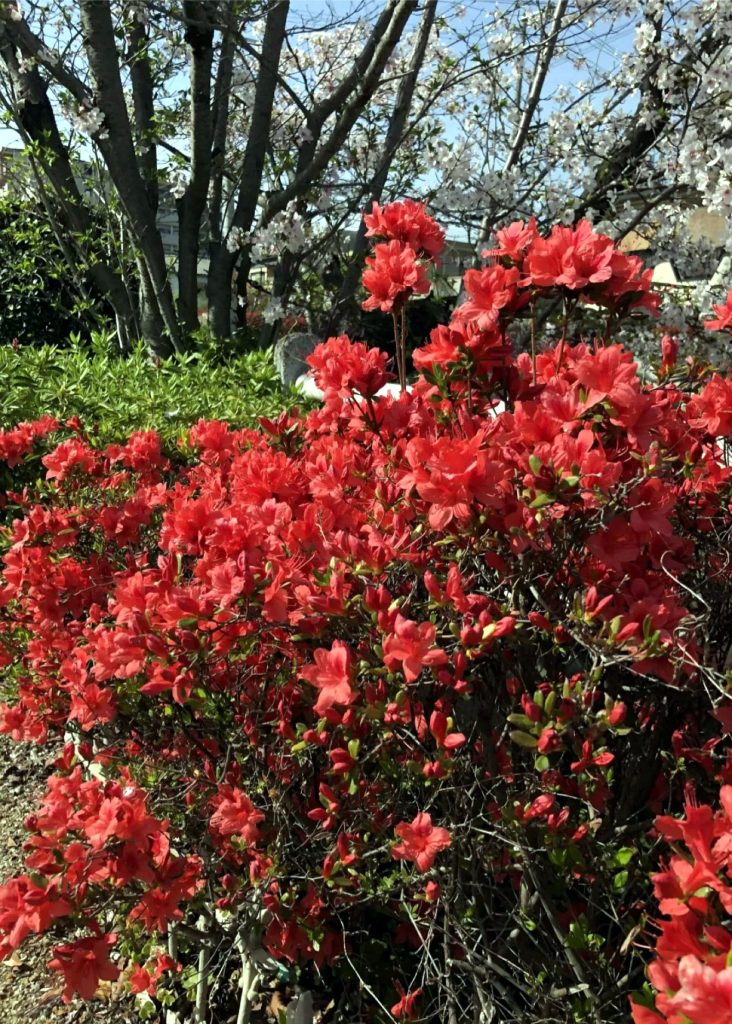
At the end of the cherry blossom avenue, a bright red Kirishima azalea is in full bloom. Its color is reminiscent of the active volcanic Kirishima mountain range. As the cherry blossoms have faded and the number of visitors for hanami (cherry blossom viewing) has decreased, it is now the season for azaleas. Among them, the Kirishima azalea is a native species of the Kirishima mountains in Kagoshima Prefecture, which was first offered as a gift to the Satsuma clan and then brought to Edo (present-day Tokyo). Due to the suitable soil conditions in the Kanto region, it became explosively popular in Edo and then spread throughout Japan. By the end of the Edo period, it was not only popular in Japan, but also actively exported to Europe. Thus, it can be seen that not only the Kirishima azalea, but many of the current ornamental plant varieties underwent breeding improvements during the Edo period and were exported to various countries in Europe and beyond. Through the culture of plants, it is clear that the foundation for the Meiji Restoration had already been established during the Edo period.
桜並木の端っこに真っ赤なキリシマツツジが咲いています。活火山の霧島連峰を思わせる赤さです。葉桜が多くなって、花見客もすっかり少なくなりました。これからはツツジのシーズンです。中でも、キリシマツツジは鹿児島県の霧島山の山中に自生するツツジで、まず地元から薩摩藩に献上され、そして江戸に持ち込まれました。関東の土壌が生育に適していたこともあって江戸を中心に爆発的に流行しました。 その後全国に広がり、江戸時代末期からは、日本のみならず、ヨーロッパにも盛んに輸出されました。こうして見てみても、キリシマツツジのみならず、今見る園芸品種の多くが江戸時代に品種改良が加えられ、欧米各国に輸出された草木が沢山あります。植物文化を通しても、明治維新の石杖になったのは江戸時代にあったことがよく分かります。
